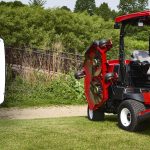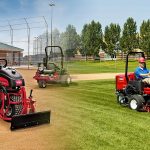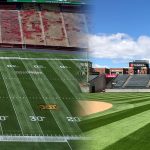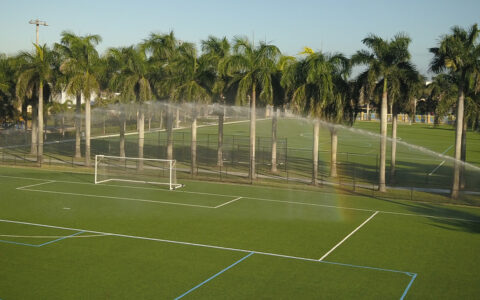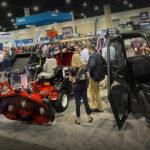When you specify turf equipment, there’s a lot to consider. Acquisition and operating costs are the first things that come to mind, but there are many other factors that are often overlooked. Machines that cost about the same up front could have a substantially different total cost of ownership. That’s why it pays to do your homework.
Analyzing your total cost of ownership gives you a clearer overall picture of what you’re really getting for your money. So, what should go into a cost of ownership analysis? We’ve compiled this list of obvious (and not so obvious) things to consider as you evaluate your turf equipment options.
Getting Started
As you research products, keep your needs in mind. What types of areas do you maintain? How many acres are you responsible for? Do any of these areas require unique specialty equipment or snow removal? Look for equipment options that do more than one job.
Acquisition Costs
This includes more than just the purchase price of the machine. For example, how much parts inventory does the manufacturer recommend you keep on hand? Do any tax incentives apply to the purchase (for example, on hybrid or electric models)?
In addition, when you’re comparing models, review the specifications to make sure you’re comparing apples to apples. How many different tasks can you do with the machine? Can it be used year-round, or only in certain seasons? How many accessories are available — and how many of them would be useful for you?
You may be able purchase accessories to convert a mower to snow removal for year-round use. Or you may be able to purchase a product that performs multiple functions for less than the cost of purchasing separate, dedicated machines. These considerations might uncover unexpected savings with a particular model.
Operating Costs
Operating costs include things like fuel, labor and consumables such as batteries, oil, filters and other routine maintenance items. The operating costs may not vary widely from one brand to another, but it’s worth investigating if one model is more fuel efficient — or if certain parts don’t need to be replaced as often. If it’s a seasonal machine, consider storage costs too.
Ease of Use
Is your staff full-time or part-time? For operators working longer shifts, comfort features can be important for productivity. Do you have seasonal/temporary employees? If you have a lot of operators running your equipment with different skill sets, they probably require more training time and resources. Ask if your local distributors or manufacturer’s reps offer training and safety classes or videos on the equipment and whether they are free or for a fee.
Service and Support
When a machine breaks down or needs service, are the parts in stock or readily available? Does the distributor offer loaner equipment or do they rent equipment when your machine is in the shop for service? Is there someone you can call when your technicians need help troubleshooting a service issue?
You may also want to consider if your local representative has had formal manufacturer training. Is your rep a knowledgeable resource for you? If that rep doesn’t have an answer to your question, is there another level of customer support directly from the manufacturer?
A good local distributor can add value to the mix in many ways, from parts availability to training to helping you configure the machine you’re purchasing for your specific needs.
Word of Mouth
Other owners can also tell you a lot about the true long-term cost of a product. What are their experiences with local support, parts availability, machine reliability and customer service? Read online customer reviews and forums, and reach out to your colleagues who own equipment that’s similar to what you’re considering. You could even ask your colleagues’ operators and service technicians for their input. These insights might reveal a clear difference between machines that otherwise look very similar on paper.
Helpful Resources
This may sound like a lot of research to do — and it can be. The good news is, a lot of this work may have already been done for you on existing state contracts and national/regional government purchasing agreements. Websites such as nationalipa.org, gsa.gov, tcpn.org and others are good resources for researching products and suppliers that have been through the vetting process. You can also visit this link for a list of websites that may be useful.
Bottom line, your turf equipment is a significant investment. Analyzing your total cost of ownership will help you make an informed decision that could save you a lot of money in the long term.

